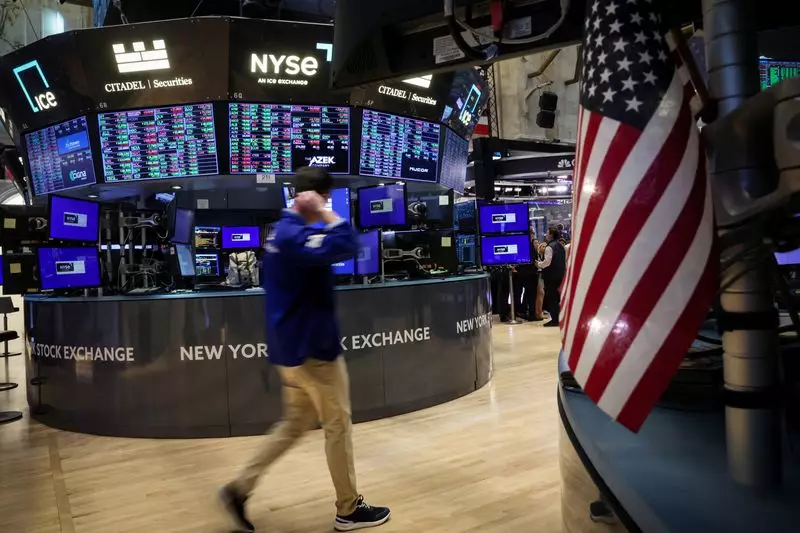As the financial landscape continues to evolve, recent market performance has revealed a promising trajectory for investors. The last trading session saw the Dow Jones Industrial Average and S&P 500 achieving remarkable record closings, a testament to the resilient nature of the current economic climate and the driving force behind this rally: strong corporate earnings, particularly from technology sectors.
In an impressive display, the major U.S. stock indices not only closed at all-time highs, but they also achieved this milestone following six consecutive weeks of upward momentum— the longest winning streak recorded since late 2023. The S&P 500 gained 0.9% over the week, with the Nasdaq Composite increasing by 0.8% and the Dow Jones rounding out the week with a 1% climb. The catalysts behind this growth were undoubtedly earnings results from influential tech companies such as Netflix, which surged by 11.1% after exceeding projections for subscriber growth, signaling robust consumer demand.
The enthusiasm did not stop with Netflix; many of the so-called “Magnificent Seven” tech stocks experienced comebacks, including Apple and Nvidia, showcasing the technological sector’s sustained vitality. Such movements in stock prices invigorate not just the tech sector but also contribute to a broader sense of optimism, uplifting the overall market sentiment.
David Waddell, Chief Executive at Waddell & Associates, referred to the current market conditions as embodying a “what’s not to like” sentiment. The positive trajectory is fueled by favorable economic indicators, a trend towards disinflation, and consistent corporate earnings that support market gains. With the S&P 500 reaching 5,864.67 points and the Nasdaq peaking at 18,489.55, it’s clear investor confidence is riding high. While the Dow’s rise was less pronounced, increasing by only 0.09% on the last trading day, it too enjoyed a prolonged stretch of success, marking it as a force to be reckoned with in the financial arena.
However, not all components of the market shared in the gains. American Express, for example, reported disappointing quarterly revenues, leading to a 3.1% drop in its stock price. This nuance suggests an uneven landscape where not all earnings reports yield positive outcomes, indicating that investors must tread carefully as they navigate through the current stock market.
One cannot disregard the shadows cast by excessively high valuations, particularly given that the S&P 500 is trading at roughly 22 times forward earnings. Critics apprehensively point towards a potential reckoning if corporate earnings do not meet the optimistic expectations that have been set. Yet, David Waddell expresses that earnings performance is paramount—suggesting that a robust showing from corporations may still bolster the market against external shocks, including political instability surrounding upcoming elections.
While there is an underlying tension regarding overvaluation, a track record of solid earnings could stave off potential fallout. Should a recession remain at bay, there’s a palpable confidence that the bull market could persist amid uncertainties both within the economic fabric and the political landscape.
In the backdrop of these large-cap giants, investors have begun to pivot towards small-cap stocks, which have shown encouraging performance relative to their larger counterparts. This trend reflects a diversification strategy, as the Russell 2000 and S&P Small Cap 600 indices attracted investor attention, even though both indexes experienced slight declines on the last day of trading.
Moreover, the energy sector faced challenges—declining by 0.4% due to plummeting oil prices. The primary concern lies with reduced demand stemming from China and geopolitical tensions affecting oil supply chains. Companies like SLB, Baker Hughes, and Halliburton have felt the pinch, showing that even in a thriving market, certain sectors can struggle under adverse conditions.
The current trading volume reflects a dynamic market environment, with 10.62 billion shares changing hands. This contrasts with the higher average of 11.56 billion shares witnessed over the preceding 20 trading days, suggesting some introspection among traders in light of fluctuating sector performance.
Investors are encouraged to maintain vigilance amidst these economic fluctuations. As much as there is optimism rooted in earnings and technological advancements, an agile approach to portfolio management remains crucial in navigating potential risks and maintaining a balanced investment strategy. The market’s future, though buoyed by notable achievements today, will require adaptability and foresight to continue thriving in the uncertain waters ahead.

